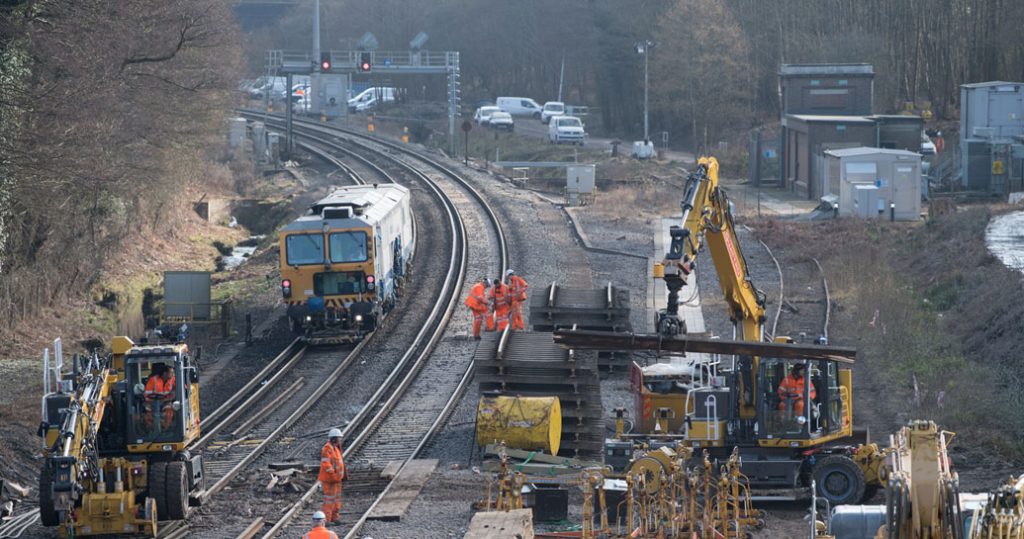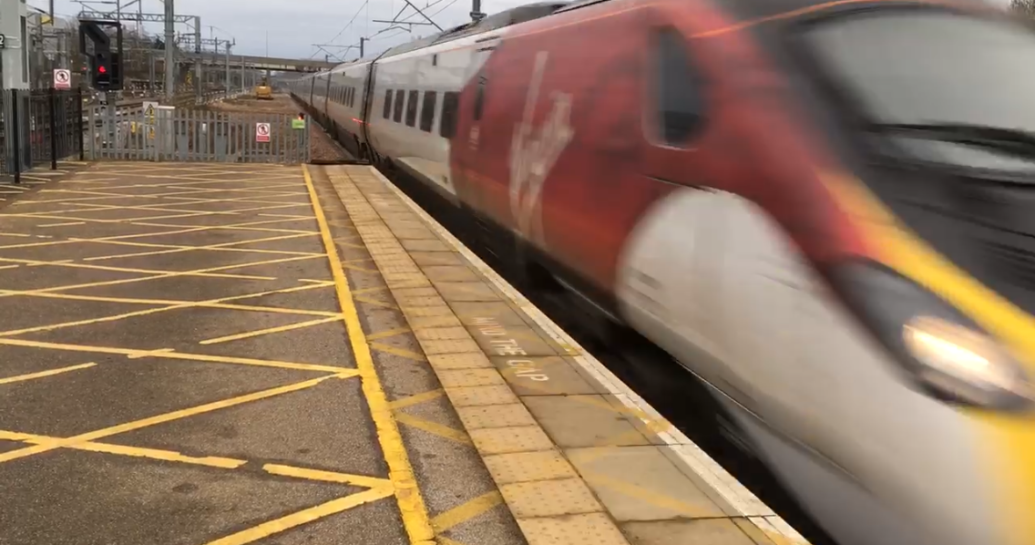Handing back the railway to your services at a higher speed is a top priority for our engineers.
We’ve made greater strides in reopening the railway at higher speeds following essential track renewals – and it’s all thanks to advances in engineering.
We carry out track renewals throughout the year to keep the railway safe and reliable for trains. We couldn’t run the railway without replacing life-expired infrastructure, but these upgrades have historically required trains to run at temporary speed restrictions of 50mph immediately after, causing delays to your journeys.
What’s a temporary speed restriction?
We apply temporary speed restrictions after significant changes or upgrades to the track infrastructure to safely manage the passage of trains following intrusive track works (renewal of rail, sleepers and ballast). We generally keep the restrictions in place for one week.
Consolidation of the new ballast – the stones on the track bed – is key to ensure we lay new track on a solid foundation to prevent dynamic movement during normal running of trains.

We’ve designed our engineering assurance process to focus on the installation quality to prove we can open the track at a higher speed and reduce the impact on services.
In addition to the engineering monitoring requirements, we remove all temporary joints during the core weekend works because temporary joints only allow trains to run at 50mph.
Success
Our strategy has been to focus first on removing the speed restrictions that have had the highest impact on your services.
On our Wessex route in recent years, we cut the total number of temporary speed restrictions – planned and emergency temporary speed restrictions – from a high of 73 in September 2018 to just 30 in May 2019, allowing trains to run at 80mph.
It follows even greater success during our Christmas season upgrades – on 28 December 2018, the line at Milton Keynes Central returned to use by train operators at 125mph in our 100th high-speed handback of that year.

How are we enabling faster handbacks?
Our engineers have a continuous improvement programme, which includes targets to return the railway to train operators at higher speeds.
We have been developing techniques to achieve this for your services over the past few years.
Crucial to this are various techniques to fully consolidate the track during construction. Dynamic track stabilisers are now regularly used during approximately eight-hour slots within the core works to consolidate the ballast through means of high-frequency vibration, mimicking weeks of passenger trains passing over the track and achieving the required consolidation.
Traditional temporary plated jointed systems, which we ordinarily use until we can fully weld the track, are only fit for services running up to 50mph so we have introduced higher speed plated joints to our list of solutions. Where we can, we like to fully weld and stress the track during the core shift, which also enables high-speed handbacks.
We use machinery guided by 3D/GPS technology to control the excavation, ballast and track installation to provide a quality product as per the design.
Doing this means we can safely allow faster trains to run over the track. Higher speed handbacks are also good for the environment because trains do not have to use energy to brake and then accelerate again.
George Murrell, a programme manager for Infrastructure Projects at Network Rail, said: “If we don’t deliver this, there could be a longer temporary speed restriction. That’s why we need to get it right, first time, every time.”
We use high-output machinery for track renewals covering longer stretches of the railway. See it in action…
Read more:




